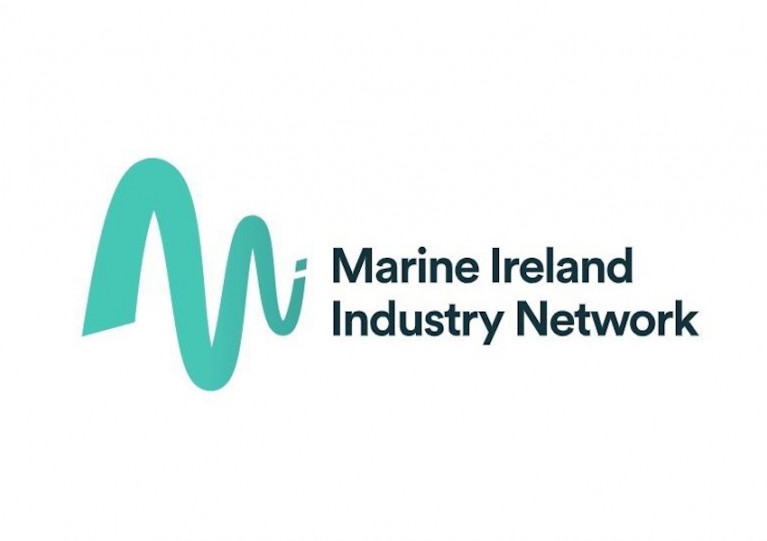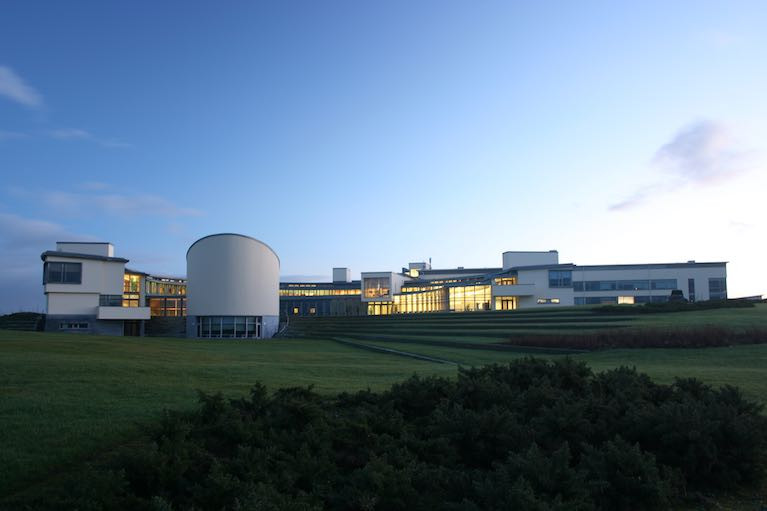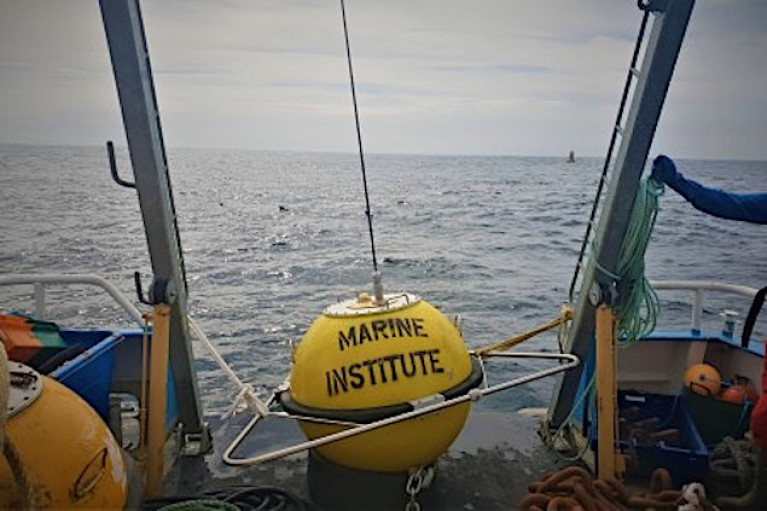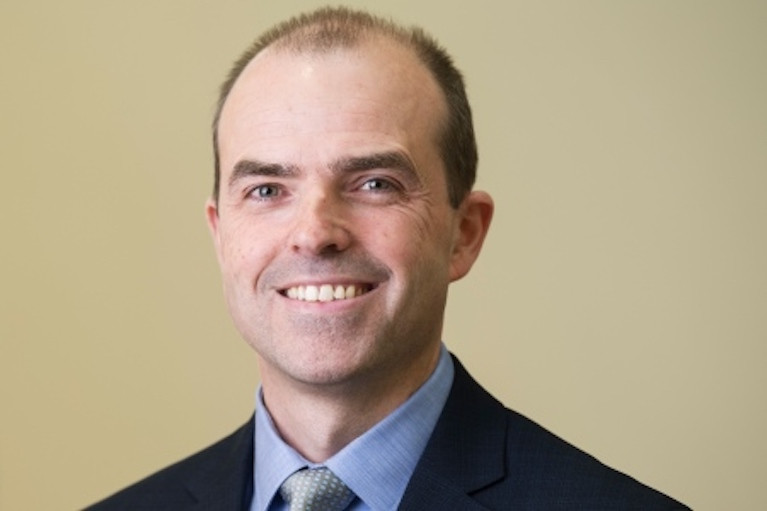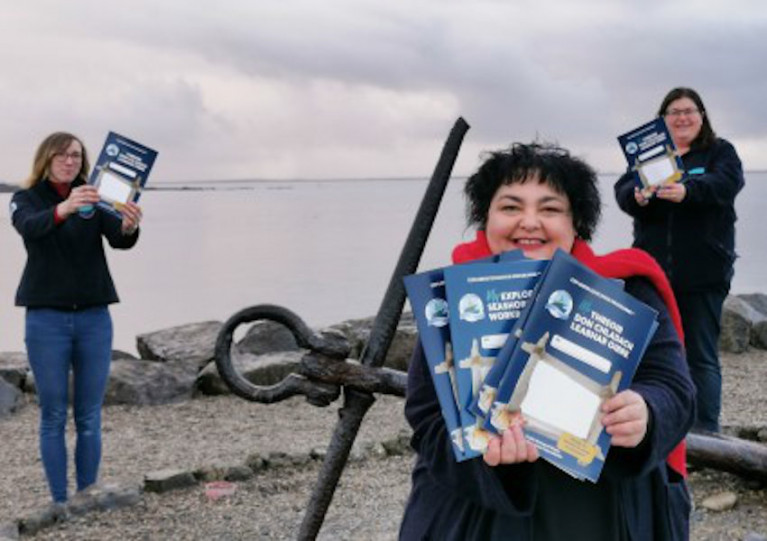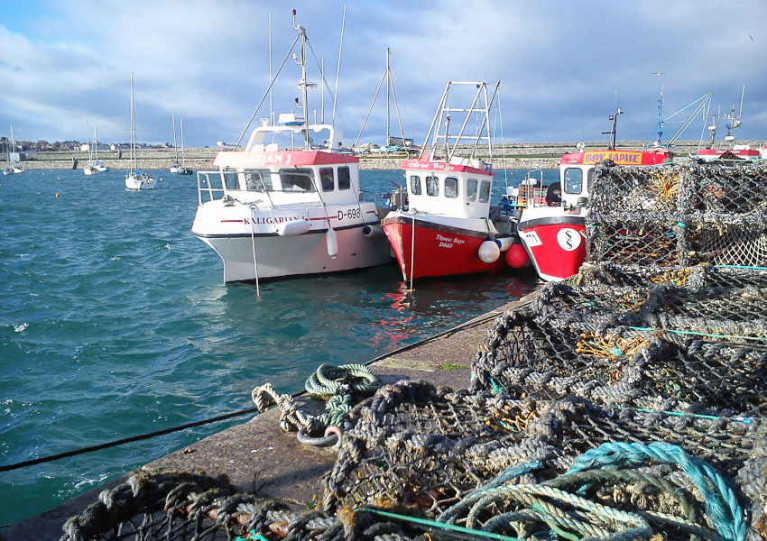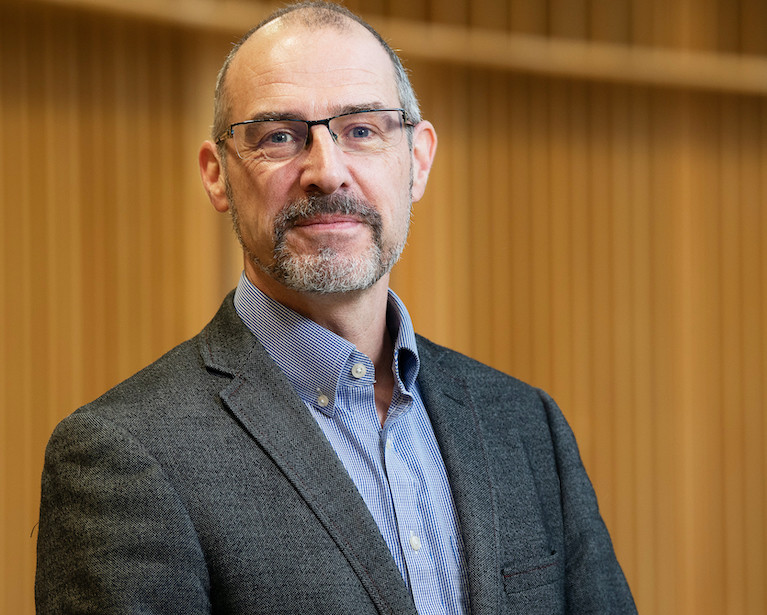Displaying items by tag: Marine Institute
The Marine Ireland Industry Network (MIIN) is expanding its social media presence as it prepares for the official launch of its brand-new website.
Established in 2016 with the aim of bringing together Ireland’s marine industry under the ‘Marine Ireland’ brand, the network comprises a diverse range of companies, State organisations, research groups and academia working in Ireland’s blue economy.
At the heart of the MIIN are the Marine Institute, Enterprise Ireland and BlueWise Marine — the former SmartBay Ireland based in Galway.
The network’s new website, which includes a member’s directory, is now live and among other things is intended to be a one-stop shop for international interests to better understand the capabilities of the marine industry here.
The MIIN says it is “focused on building collaboration and promotion opportunities for its members, both nationally and internationally”.
The new website is now live and will be officially launching soon. For updates on this launch event and more follow @MarineIrnNet on Twitter.
Minister Invites Applicants for Board of the Marine Institute
The Minister for Agriculture, Food and the Marine invites applications from suitably qualified candidates to fill four vacancies on the board of the Marine Institute.
Candidates must have demonstrable experience relevant to the work of the Institute in one or more of the following areas.
- Seafood/Sea Fisheries Sector
Given the strategic significance of the seafood sector, the complexity of the issues, opportunities it presents and the critical role of the MI in relation to this priority, at least one of the successful candidates should have demonstrable experience of having worked at an appropriately senior level in the seafood or wider food sectors and or the sea fisheries sector specifically. - Climate Impacts and Mitigation
The Marine Institute's Strategic Plan has a strong focus on Climate Change. One or more of the successful candidates should have demonstrable knowledge of Ocean Climate issues including mitigation/adaptation and research priorities in this area. - Ocean Energy and/or Marine Technology
The successful candidate(s) should demonstrate a strong demonstrable working knowledge at an appropriately senior level of policy and developments in the ocean energy and or marine technology sectors with particular emphasis on experience or knowledge of the sectors within an Irish context. - Marine Research and Development
The successful candidate(s) should have clearly demonstrated national & international research experience in the marine area. In addition, they should have experience in managing research programmes and a proven knowledge of research policy and the funding environment in the area of the marine science, both nationally and internationally. - Desirable:
• Previous Board Membership
• Corporate Governance & Compliance.
• Risk Management, Strategic Planning and Implementation
• Executive/Managerial/Professional Experience of relevance to the MI
• Strong marine sectoral knowledge
• Economic knowledge/expertise relevant to the Irish ocean economy
• Financial (Accountancy, Audit, Corporate Finance)
Closing Date: 15:00 on Friday 29th of January 2021
For more information see here
Waverider Buoy Research Project to Measure How Extreme Storms & Wave Heights will Impact the Coast
A research project led by coastal and ocean scientists in NUI Galway and the Marine Institute involves the deployment of a combination of smart buoys and time-lapse imaging to measure storm impacts and support the development of coastal flood and erosion defences.
The project, Brandon Bay on the Dingle Peninsula, Co Kerry, involves:
- A new waverider buoy provided by Sustainable Energy Authority of Ireland to measure wave height, wave direction, wave period, surface currents, and water temperature as well as storm impact
- Data being made available to view or download on the Marine Institute supported website Digital Ocean, a web portal to view data collected in and around Ireland's maritime zone.
- The installation of a shoreline monitoring system along Brandon Bay at three sites, which will capture images of the beach every 10 minutes during daylight hours over the next 12 months, to identify the time periods when wave run-up is high enough to reach the dune toe and potentially cause coastal erosion. This research is funded by Geological Survey Ireland.
Dr Eugene Farrell, Discipline of Geography and Ryan Institute's Centre for Ocean Research and Exploration (COREx), NUI Galway, said: "We want to improve existing coastal change models by developing better insights into why does change occur and how much change will occur if we dial up climate projections for rising sea levels and storminess. To answer these questions we require process-response coastal models and these are only possible if nearshore observations from wave buoys such as the one in Brandon Bay are deployed over long time periods to capture all the seasons.
"We already know that changes along the coast from elevated storm surge and wave run-up result in changes in seabed and beach elevations. The data captured by the waverider will play an integral part in dismantling the important connections between different storm types such as size, direction, duration, clustering and coastal response that allows us to share real time ocean observations that can be used to address coastal erosion and coastal flood protection.
 The wave buoy pictured after deployment in Brandon Bay on the 1, December 2020. Photo: Eugene Farrell, NUI Galway
The wave buoy pictured after deployment in Brandon Bay on the 1, December 2020. Photo: Eugene Farrell, NUI Galway
Alan Berry, Manager of Marine Research Infrastructures at the Marine Institute said, "The wave buoy at Brandon Bay will enable researchers to observe and understand how our ocean is changing and determine how to respond to current and future patterns of change. Open access to this data on Ireland's Digital Ocean website is valuable to climate researchers in Ireland and across Europe."
The Brandon Bay long-term waverider project is co-led by Dr Eugene Farrell, Discipline of Geography, Sheena Parsons, Earth and Ocean Sciences, and Dr Stephen Nash and Andi Egon, Civil Engineering in NUI Galway, and Alan Berry and Conall O'Malley from the Marine Institute with support from the Sustainable Energy Authority of Ireland.
In September 2020, a Coastal Change Technical Working Group was established within the Irish government and tasked with overseeing the development of a scoping report on a national coastal change management strategy. They have envisaged that the scoping report will address issues related to 'baseline and other data capture and research requirements to inform developing, implementing and monitoring a national coastal management strategy, to include potential damages assessment'.
Dr Eugene Farrell adds: "We feel it is our responsibility as coastal scientists to provide the requisite baseline information and recommendations to guide future research along the coast in order to fill knowledge gaps. This is an integral part of the Brandon Bay Waverider project and can be used as a demonstration project so that future investment in coastal infrastructure can be identified.
"Cumulatively, our approach requires a large team of experts to work together. The Maharees in Brandon Bay is already becoming a hub for coastal science thanks to the active community group in the area, the Maharees Conservation Association. There is an urgent need to increase our understanding of coastal change so that that we can better protect our coastal communities and design conservation plans for coastal ecosystems whose dynamic boundaries move in response to changing climate conditions."
The Brandon Bay Waverider project is supported by the Marine Institute, NUI Galway and MaREI, the SFI Research Centre for Energy, Climate and Marine research and the Sustainable Energy Authority of Ireland.
Wave data results from the Brandon Bay Waverider project can be viewed here
Photo: The wave buoy pictured after deployment in Brandon Bay on the 1, December 2020. Photo: Eugene Farrell, NUI Galway
About the Waverider Buoy
The data from the buoy is being used to validate a state-of-the-art high-resolution coastal erosion modelling system comprising of wave, tide and sediment transport models that is under co-development in Civil Engineering, Earth and Ocean Sciences and Geography disciplines at NUI Galway and the Marine Institute since early 2019. The key attraction of these specialised numerical ocean models is their predictive capability. The model predictions are first tested against real-time observations in the bay and then tested for different climate change scenarios such as rising water levels or increasing wave heights.
For example, once the model is validated using the wave buoy observations the project team can test outcomes using the OPW sea level rise scenarios: (1) conservative Mid-Range Future Scenario which uses a sea-level rise of 0.5m by the year 2100 and (2) a High-End Future Scenario, which uses the maximum projected sea-level rise of 1.05m for the year 2100.
Superimposed on these changing sea levels the group can investigate how extreme storms and wave heights will impact the coast and determine how these impacts will be manifested on the coast, such as rates of shoreline retreat or increasing vulnerability of coastal communities and infrastructure.
The yellow spherical wave rider is one metre in diameter, is equipped with an antenna and light and is anchored to the seabed by a mooring. The light will flash yellow for five seconds every 20 seconds in hours of darkness. An accelerometer mounted within the buoy registers the rate at which the buoy is rising or falling with the waves. This type of 'heave, pitch, and roll buoy' is the most commonly used buoy for measuring waves in deep water. It measures the surface height and slope in different orthogonal directions to yield the horizontal and vertical displacements of the buoy.
The Brandon Bay Waverider Acknowledgements
Marine Institute & Sustainable Energy Authority of Ireland
The Marine Institute, supported by the Sustainable Energy Authority of Ireland, have been instrumental in the execution of this project. They have been very generous with their time (research-in-kind) and sharing their expertise and equipment. We would especially like to acknowledge the leadership of Alan Berry, Section Manager, Marine Research Infrastructures and Conall O'Malley, both from the Marine Institute.
The Marine Institute is a State agency responsible for marine research, technology development and innovation in Ireland whose remit is: "to undertake, to coordinate, to promote and to assist in marine research and development and to provide such services related to research and development, that in the opinion of the Institute, will promote economic development and create employment and protect the marine environment." This project exemplifies how scientific progress can be made when academics link up with management agencies like the Marine Institute.
The Sustainable Energy Authority of Ireland is Ireland's national energy agency aiming to create a cleaner energy future by making Ireland's energy sustainable, secure, affordable and clean. SEAI supports the Irish offshore renewable energy sector by advising the government on policy, offering grant support schemes, developing test site infrastructure, and providing information through the Ocean Energy Ireland portal. The Brandon Bay wave rider provided by SEAI will be part of the wave monitoring network of coastal buoys operated on behalf of SEAI by the Marine Institute.
The Marine Institute work with P&O Maritime Logistics who co-led the technical parts of the deployment including the installation of the base station and also the actual deployment.
NUI Galway
The NUI Galway Research Office provided funding support. This office is part of the Office for the Vice President for Research and works closely with the Innovation Office, the Researcher Development Centre and other professional services supporting the NUI Galway research community. We would especially like to acknowledge the support of Aengus Parsons, Director of the Research Office and Professor Lokesh Joshi, Vice President for Research for their support.
MaREI
MaREI is the SFI Research Centre for Energy, Climate and Marine research and innovation co-ordinated by the Environmental Research Institute (ERI) at University College Cork and also based in NUI Galway. We would especially like to acknowledge the support of Dr Stephen Nash in Civil Engineering in NUI Galway. The data from the wave buoy are an integral part of an ongoing MaREI funded PhD programme in NUI Galway.
Maharees Conservation Association and partners
The ongoing coastal and ocean research is not possible without the support of the Maharees community. We are very excited to contribute to our scientific understanding of coastal and ocean dynamics in the bay area with the hope that the results will support ongoing efforts by the community to build their resilience to pressures from storms and people. We would especially like to acknowledge Mr Paddy Buckley and his family for allowing us to install the base station in their home in the Maharees. The NUI Galway team would also like to thank Kerry County Council, National Parks and Wildlife Service and OPW for supporting coastal research in the area.
Research Funders Review Ireland’s Progress in Marine Research & Innovation at Latest Forum Meeting
The recent sixth meeting of the National Marine Research Funders’ Forum on 26 November followed the launch this past summer of the new National Marine Research Database.
Developed in collaboration with national funders, the database displays more than 500 marine research projects that have received combined funding of over €230 million from national and international funding programmes.
The forum’s latest meeting provided an opportunity to share updates on organisation programmes, funding calls and developments of strategic importance.
This included an update on the EU Horizon Europe research and innovation (R&I) framework programme 2021-27 and the launch of a stakeholder consultation on a strategic R&I agenda on a ‘climate-neutral, sustainable and productive Blue Economy’ partnership.
A review of the National Marine Research and Innovation Strategy 2017–2021 commenced in June to assess progress in achieving the three goals of the strategy as it enters its final year. Initial findings of the review were presented and discussed at the meeting, with a final report due to be completed in early 2021.
Dr Niall McDonough, director of policy, innovation and research support services at the Marine Institute and chair of the Marine Research Funders’ Forum, said: “Coordinated and targeted investment in marine research and innovation in Ireland is essential to address key national and global challenges that we face as well as playing a significant role in Ireland’s economic recovery and growth.”
The Marine Research Funders’ Forum brings together State research funding organisations with the aim of enhancing coordination in marine-related research funding, while also addressing key implementing actions set out in the National Marine Research and Innovation Strategy.
Marine Institute Director Elected Chair of JPI Oceans Management Board
Dr Niall McDonough, Director of Policy Innovation and Research Support Services at the Marine Institute, was recently elected Chair of the JPI Oceans Management Board.
JPI Oceans is an intergovernmental platform that works to increase the alignment and impact of national investments in marine and maritime research and innovation in Europe. The platform provides its member countries with a shared voice, strategic agenda and action plan to address complex ocean-related societal challenges that cannot be solved at national level. JPI Oceans focuses on long-term collaboration between EU member states, associated countries and international partners.
Niall trained as a marine biologist with research interests in marine aquaculture and shellfish stock restoration. Following two years with the Environmental Change Institute at the National University of Ireland, Galway, he worked for five years as Head of the Centre for Marine Resources and Mariculture at Queen's University Belfast. From 2009 to 2017, he served as Executive Director of the European Marine Board based at the InnovOcean campus in Ostend, Belgium. In 2017, Niall commenced his current role with the Marine Institute where he oversees the management of the Institute's competitive marine research programme and coordinates the implementation of the National Marine Research and Innovation Strategy 2017-2021.
Dr Niall McDonough said, "JPI Oceans has become a key platform for cooperation in marine and maritime research in Europe. National ministries and funders value the efficient and agile mechanisms it provides to identify and implement the research needed to address shared challenges in the safe and sustainable use of ocean space and resources. I look forward to working with the Secretariat, vice-Chairs and Management Board to implement the new JPI Oceans Strategy Framework and to consolidate the role and impact of JPI Oceans at the core of European ocean research."
Prior to his appointment of Chair of the JPI Oceans Management Board and Internal Advisory Board, Niall was elected a member of the JPI Oceans Strategic Advisory Board. Alongside Dr Maurice Héral from the French National Research Agency, Niall also led recently the involvement of Member States and Associated Countries in the development of the European Partnership 'A climate neutral, sustainable and productive Blue Economy'.
Dr Niall McDonough will serve as Chair of the JPI Oceans Management Board for a three-year term.
Explorers Education Programme’s Workbook Causes a ‘CommOCEAN’ at International Conference
A publication by the Marine Institute’s Explorers Education Programme that connects children, parents, teachers and the media with the seashore in Ireland has been highlighted at a major international conference.
My Explorers Seashore Guide Workbook was recently presented at the 4th International Marine Science Communication Conference, CommOCEAN, which brings marine science experts and communication professionals together to learn more about advocating the spread and outreach and communication about the ocean.
Speaking at the conference, the book’s author Cushla Dromgool-Regan said: “To really engage and be passionate about caring for our marine environment, it is said that we need to be able to see it, hear it, feel it, smell it and taste it.
“Therefore, with over half of Ireland's population living 5km from the coast in Ireland, the seashore is the perfect playground to learn about our ocean.
“The Explorers workbook can be used to help inspire learning about the shore before, during and after heading to the beach. It can be used by children of all ages to learn about the amazing animals, seaweeds and habitats that can be found our doorstep.”
My Explorers Seashore Guide Workbook was launched earlier this year to mark International Biodiversity Day, as previously reported on Afloat.ie, and more than 800 copies of the book were downloaded within its first couple of months.
“I am delighted that the book sparked a keen interest with teachers and parents teaching at home this year, as well as the media’s interest in sharing our stories and passion for the sea,” added Dromgood-Regan, who is also Explorers strategic manager and communication lead from the Camden Education Trust.
“The importance of learning, communicating and engaging in decisions about our ocean, starts at home around our kitchen table.”
As announced at CommOCEAN, the My Explorers Seashore Guide Workbook is now published in English and Irish as a free download from the Marine Institute’s open access library.
High Numbers of Sperm Whales Counted off Irish West Coast in New Study
Up to 380 sperm whales are living in deep waters off the Irish coast, a newly published study has found.
This makes sperm whales “one of the most abundant great whale species” in these waters, expert Dr Simon Berrow says.
Sperm whales are known for their distinctive echolocation “clicks” which can be heard over many tens of kilometres, and this allows them to be counted.
A survey team from Galway-Mayo Institute of Technology (GMIT) and the Scottish Sea Mammal Research Unit (SMRU) Consulting spent 45 days at sea in harsh weather conditions to conduct the population count.
 Deploying towed hydrophone from RV Celtic Voyager Photo: Simon Berrow
Deploying towed hydrophone from RV Celtic Voyager Photo: Simon Berrow
“With high sea states and towering swell, the study relied purely on being able to detect the distinctive powerful click trains of sperm whales using a streamlined towed hydrophone or underwater microphone array,” Dr Berrow said.
The results were published recently in the Journal of Cetacean Research and Management, following detailed sea surveys dating back to 2015.
Dr Berrow, the principal investigator on the study, noted that the deep-diving tendency of sperm whales makes them difficult to observe at sea – they can spend nearly an hour in depths below 300m.
Only 11 individuals were sighted during 388 hours of effort, he said, but 391 acoustic detections were recorded.
 Sperm whales off Ireland’s west coast Photo: Irish Maritime Squadron
Sperm whales off Ireland’s west coast Photo: Irish Maritime Squadron
“Each whale was pinpointed by comparing the exact time that each click arrived at each hydrophone in the array and then triangulating bearings from sequential clicks over extended encounters,” he said.
The whales seemed to prefer seabed areas that sloped to the northwest, including the Erris and Rockall Basins.
There was also a dense concentration of sperm whales in the South Brona Basin canyon system near 350km west of Co Kerry
The surveys were carried out from the Marine Institute’s RV Celtic Voyager and the yacht Song of the Whale, operated by Marine Conservation Research Ltd.
The study was part of the ObSERVE-Acoustic project funded by the Department of Communications, Climate Action and the Environment and the National Parks and Wildlife Service.
More here
New Technologies May Help Fishing Skippers Avoid Unwanted Catches
Scientists at the Marine Institute are investigating how new technologies could be used to share real-time information and help fishing skippers avoid unwanted catches.
The IFISH (Irish Fisheries Information Sharing Network Development) project, funded by the Science Foundation Ireland, is encouraging fishers to participate and assist in developing a useful information-sharing tool for the industry.
New technology is increasingly being used to assist skippers avoid unwanted catches, but is yet to be used in Irish fisheries.
Co-operative schemes and mobile phone applications are being developed in fisheries across the world from the USA to Scotland, to help skippers receive up to date information on the location of fish, to assist in avoiding juvenile or quota limited species.
The new BATmap app, for example, is being trialed by Scottish fishers to help avoid choke species in west of Scotland fisheries.
IFISH will build on the research conducted as part of the DiscardLess project, which resulted in the development of a discard hotspot mapping app.
The project will move beyond producing static maps of fish distributions based on historic catch patterns and look at how information sharing among the Irish fleet could help provide real-time information on the location of fish that fishers don’t want to catch, such as undersize juveniles.
Julia Calderwood, scientist at the Marine Institute, said: “At this early stage of the project, we are really keen to talk to anyone who is willing to share their experiences and opinions on how effective different fishing tactics are at avoiding unwanted catches, as well as how sharing information on the location of unwanted catches may potentially help in further avoiding them.”
Industry involvement in the IFISH project is key to help co-design information sharing tools and ensure they are developed to assist in avoiding problematic catches, whatever they may be locally or within particular fisheries.
By working with partners in a number of different fisheries, it will also be possible to set up separate information sharing networks in different fisheries or regions, rather than taking a broad approach.
“Industry input is really important to help shape this research so that we can ensure that we are addressing industry needs and concerns and to ensure any output from this work is useful and relevant,” Calderwood added.
The use of any developed tools will be completely voluntary, with skippers only taking part if they feel it would be useful, and all information shared would be private and only available to skippers using the tool.
For more information or to participate in the IFISH project, contact Julia Calderwood at [email protected]
Join in with Marine Institute Staff on Virtual Festive North Pole Trek in Aid of RNLI
Staff at the Marine Institute are attempting to walk, run, row, cycle and swim the 4,068km distance from their headquarters in Galway to the North Pole in aid of the RNLI.
And they’re inviting everyone to join in and support their virtual festive fundraising challenge, which runs until Friday 18 December.
“Many of our colleagues and those that we work with spend much of their time at sea,” says Marine Institute chief executive Dr Paul Connolly. “Knowing that the emergency services are there should we need them is a huge comfort for all who use the ocean whether for work or for pleasure.
“This year has been difficult for many and especially hard also for charities such as RNLI Lifeboats Ireland. For these reasons, as an organisation the Marine Institute decided that together we could do our bit to support the RNLI and have a bit of festive fun while we are at it.”
It costs the RNLI €1,650 to train a volunteer lifeboat crew member for a year, and €1,764 to kit them out in their lifesaving gear — so every euro raised counts.
“We are asking the public to consider adding their kilometres to our fundraiser and making their steps or swims count. Together we can make this an easy downhill and raise much needed funds for RNLI lifeboats,” Dr Connolly adds.
If you want to take part, commit some kilometres to the 4,000km total or choose to donate. And don’t forget to post your challenge photos on social media, tagging the Marine Institute on Twitter or Facebook and using the hashtag #NorthPoleChallenge
Marine Institute Appoints Two Directors
The Marine Institute has announced the appointment of two Directors to the state agency’s Senior Leadership Team. Dr Ciaran Kelly has been appointed Director of Fisheries Ecosystems Advisory Services and Joe Silke to the position of Director of Marine Environment and Food Safety Services.
Dr Paul Connolly, CEO of the Marine Institute said, “I congratulate Dr Ciaran Kelly and Joe Silke on their appointments to the Marine Institute’s Senior Leadership Team. Both Ciaran and Joe bring a wealth of experience and knowledge to these roles, and will lead our people in undertaking innovative research and providing a range of monitoring, scientific and technical services to government, agencies and industry.”
The Marine Institute’s Fisheries Ecosystems Advisory Services team research, assess and advise on the sustainable exploitation of Ireland’s fisheries resource and marine ecosystems.
 Director of Marine Environment and Food Safety Services, Joe Silke Photo: Andrew Downes
Director of Marine Environment and Food Safety Services, Joe Silke Photo: Andrew Downes
Dr Ciaran Kelly graduated from Trinity College Dublin with a degree in marine biology and a PhD in Fisheries Science from University College Dublin. Starting as a researcher on commercial deep water fish species on trawlers out of Killybegs, Ciaran has gone on to lead the acoustic survey and pelagic assessment teams at the Marine Institute, before managing the national Marine Research Funding Programme. He has been involved in advice provision to government managers and policy makers for over 20 years, playing a key role in the development of the Maximum Sustainable Yield advice framework and the development of advice for data limited stocks at the International Council for the Exploration of the Seas (ICES).
As the Director of Marine Environment and Food Safety Services, Joe Silke will lead the team responsible for scientific services to government in support of evidence-based policy advice and to meet objectives for safe seafood, sustainable development of the marine environment and fish health.
Joe studied in Galway Mayo Institute of Technology and in Trinity College Dublin where he qualified with a Master’s Degree in Environmental Science. His career originated in the aquaculture industry where he worked in shellfish hatcheries and on-growing facilities, and innovative production methods through the 1980s. He then moved into research activities in phytoplankton and oceanography, and carried out several projects in the field of marine aquaculture development and environmental surveying. Joe has served on several international working groups and is the current Chair of the Intergovernmental Oceanographic Commission of UNESCO (IOC) Panel on Harmful Algal Blooms.
The Marine Institute is the State agency responsible for marine research, technology development and innovation in Ireland. The Marine Institute carries out environmental, fisheries, and aquaculture surveys and monitoring programmes to meet Ireland's national and international legal requirements. The Institute also provides scientific and technical advice to Government to help inform policy and to support the sustainable development of Ireland's marine resource.
The Marine Institute aims to safeguard Ireland's unique marine heritage through research and environmental monitoring. Its research, strategic funding programmes, and national marine research platforms support the development of Ireland's maritime economy.


























